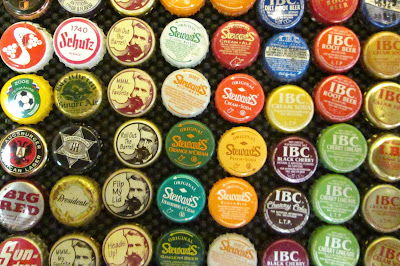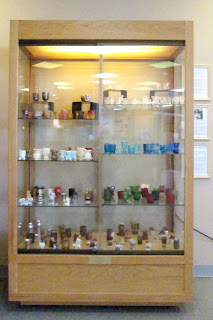Colby will be one of the stops
on September 30 during the multi-city 2015 Fly Kansas Air Tour. The 2015 tour is sponsored by Kansas Commission on Aerospace Education in partnership with Kansas Department of Transportation, Division of Aviation. The tour starts with Wellington, Pratt, Dodge City and Liberal on September 29th, continues to Garden City Colby, and Hays on the 30th, and with Concordia, Junction City and Emporia on the route for October 1st.
While preparing a poster with a brief history of Colby Municipal Airport for this event, I wanted to share a few of the highlights from our photo and newspaper archives.
In the 1920's Colby residents and city fathers realized the importance an airport could mean to a community looking to expand and connect with other parts of Kansas and the United States. Residents were excited when a letter was received at the Chamber of Commerce in late July 1927 from Chicago & Southwestern Air Lines expressing an interest in making Colby a stop on their Denver to Kansas City route. The need for a landing field became top priority.
(Click photos to enlarge)
The first airport in Colby was located west of town on a tract of land owned by the Wallace farm in the NE1/4 Section 2, Township 8S, Range 34W.
"A site has been selected for our Airport. The City has leased a tract of land on the Wallace farm a mile west of Colby. Forrest Wallace, who occupies the home place will get quite a wallop from having the airport right in his back yard." (Quote from the Colby Free Press, May 18, 1930)
This Piper Cub airplane was the first one owned by Dwight Murray in the fall of 1940. Notice the Murray Motors - DeSoto/Plymouth - Colby, Kansas painted on the door. The Cub is parked at the first City Airport in the Wallace pasture west of the Colby Experiment Station. The Wallace home and farm buildings are in the background.
In the fall of 1942, discussion about a new airport was on the Chamber of Commerce agenda. It was decided to ask the Colby City Council to ask the community to vote on bonds for a new airport. The money would be used to obtain land and build facilities.
Results of the $65,000 bond election appreared in the April 7, 1943 Colby Free Press with 340 voting for and 101 voting against it. A city ordinance passed on September 7, 1943 officially named the airport Colby Municipal Airport. Land was acquired north of Colby, but construction did not begin right away because of World War II.
Aerial view of Colby Municipal Airport
Harlan Williams was airport manager in the 1960's. Shown here in front of the main hanger and terminal building.
On June 2, 1975 the Colby City Council under the direction of Mayor Don Phillips the airport was officially named Shalz Field in honor of Joe Shalz, an early Thomas County aviator.
Joe Shalz "The Flying Dutchman" by his first airplane, August 20, 1929.
An open house celebration at the airport.
The 1980's saw many improvements and changes at the airport when federal government grants were made available. Some of the improvements included extension of the length and width of the runways, improved taxiways, new runway lighting, and a new terminal building completed in 1984.
Colby Municipal Airport Terminal Building 2015
Modern comfortable pilot - passenger lounge area in the terminal building.
If you have photos, stories, or memoriabelia to share about aviation in Thomas County please bring or send them to Prairie Museum of Art & History, 1905 S. Franklin Ave., Colby, Kansas 67701. Or e-mail
prairiem@st-tel.net






















